Disclosure: Meeple Mountain received a free copy of this product in exchange for an honest, unbiased review. This review is not intended to be an endorsement.
This lake ain’t big enough for the four of you. The Loch used to house just a single sea serpent and that was all well and good. The fish were bountiful, the views were magnificent, and there was lots of room to roam.
But lately it’s gotten a little crowded with heads and tails and writhing bodies all over the place. It’s time to show those other serpents who’s boss and send them packing with their ridiculously long tails between their non-existent legs. It’s time to reclaim what was rightfully yours.
It’s time to play Block Ness.
Over (and under) view
In Block Ness, two to four sea serpents are going to battle it out to establish dominance within the confines of the Loch. Each player begins the game with a collection of U-shaped plastic pieces in several sizes which represent the different segments of their sea serpent’s body as they rise and dip beneath the surface of the Loch. Each of these segments has a notch at either end that can accommodate a plastic head or tail piece.
Players will be taking turns placing these segments into the peg board frame one segment at a time in order to crawl over, stretch out, and try to block their opponents from being able to expand their own serpents. Block Ness is an area control battle, played out in three dimensions. If you’re the last player with a legal move, you’ll win the game. Or if everyone has placed all of their pieces or cannot play any more, the person who has the highest elevated head will win.
That’s the basics of the game. There are several specific placement rules that the players must follow and if you’d like to dig more into those and the other minutiae then continue reading. Otherwise, feel free to skip ahead to the Thoughts section to see what I think of Block Ness.
Treading Water
The setup for a game of Block Ness is ridiculously easy. Each player chooses a color and takes all of the plastic pieces of their chosen color. Then the peg board frame is placed into the game box to create your playing surface. Depending on the player count, there are different game boundaries. Beginning with the start player and going clockwise, each person will take turns placing their smallest segment onto the game board, within the boundaries, and then slotting their head onto one end and their tail on the other.
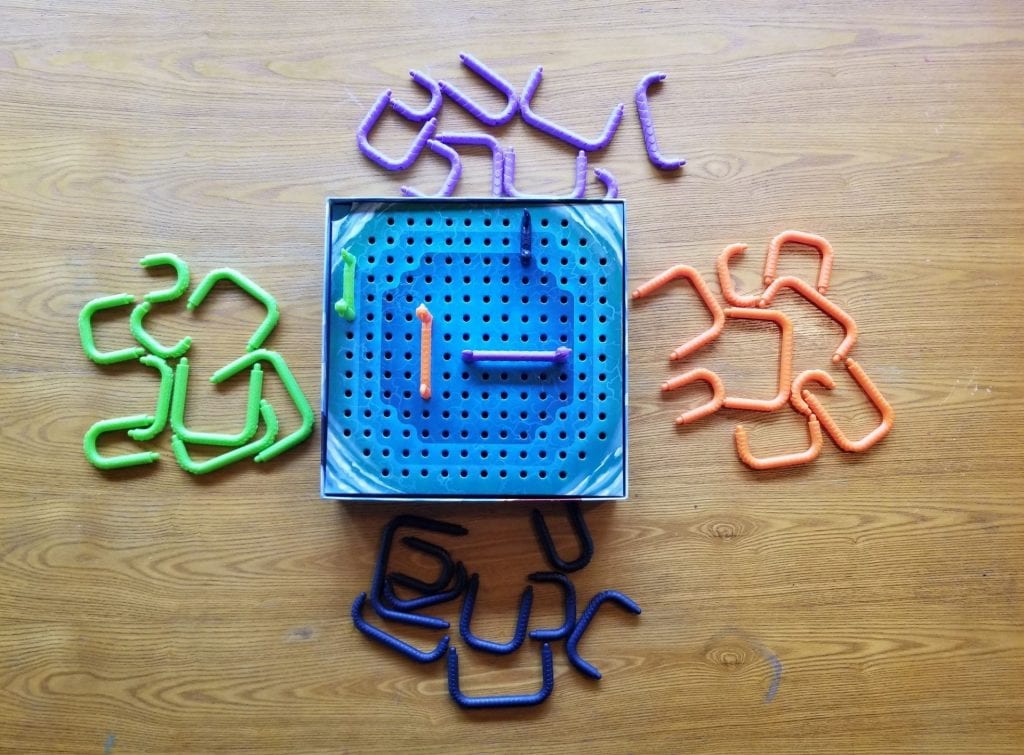
Once every player has finished this, you are ready to begin playing Block Ness.
Taking a Dive
On their turn, a player will place one of their segments onto the board following a few rules:
- The newly placed segment may not extend beyond the boundaries.
- One end of the newly placed segment must be placed into one of the holes directly adjacent to the head or tail segment of their serpent. Then the head or tail (depending on which end of the serpent is being extended) is moved to the end of this newly placed segment.
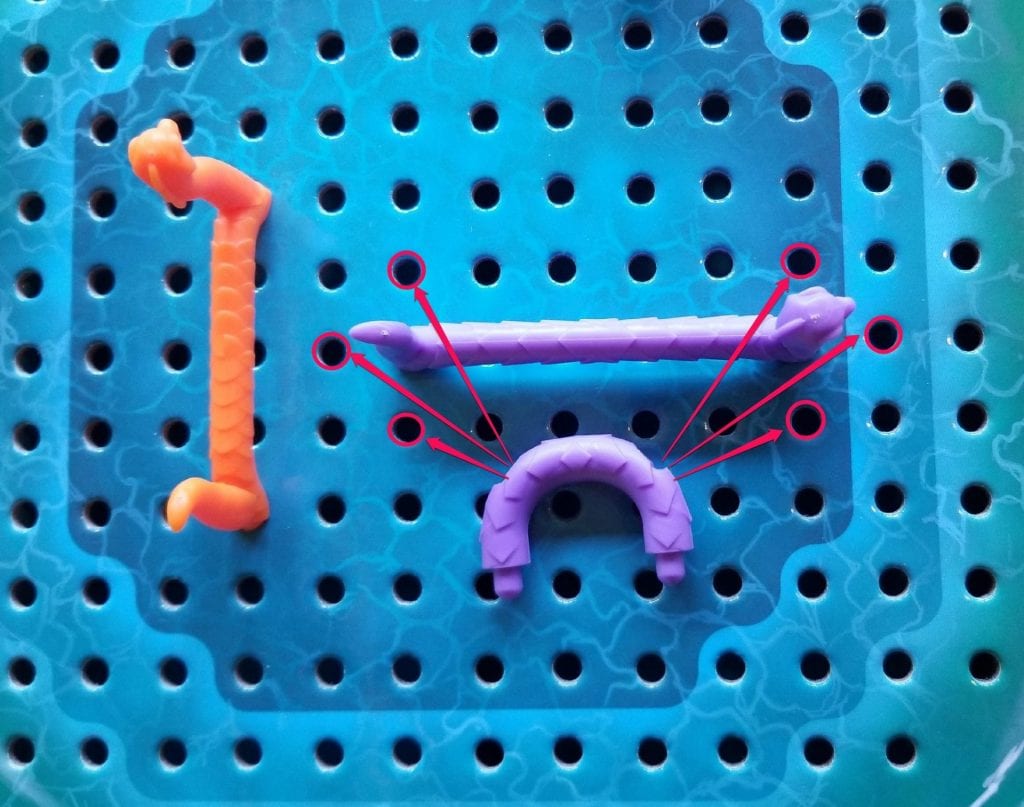
- The newly placed segment cannot be placed underneath a previously placed segment (their own or one of their opponents’).
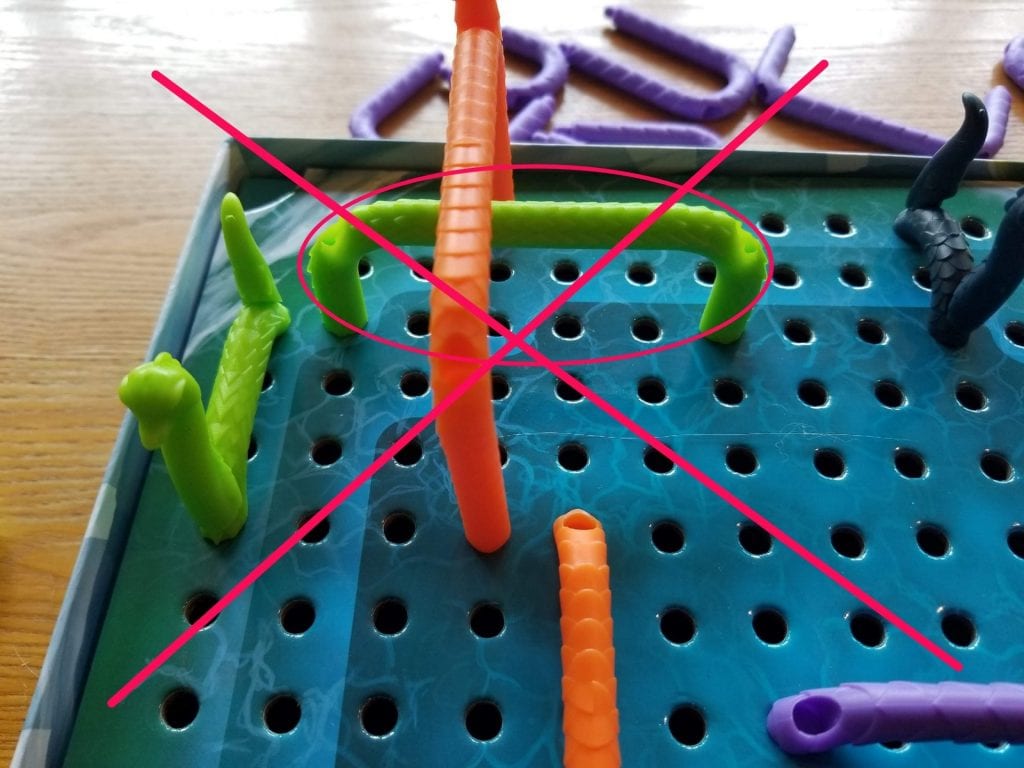
- The newly placed segment cannot stretch over the head or tail of an opponent’s serpent, but can extend over the player’s own. The head or tail is removed temporarily and then placed into the newly placed segment at its end.
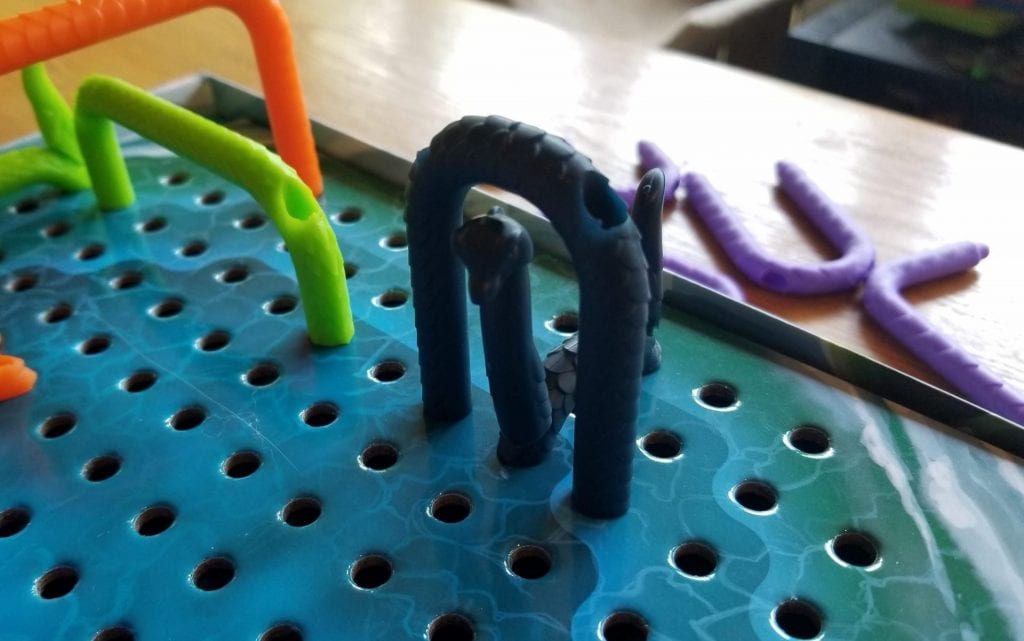
- The newly placed segment can stretch over any other existing segments so long as it does not touch any of them or extend beyond the boundaries.

- Newly placed segments may never be placed diagonally. Only cardinal directions are allowed.
This sounds confusing on paper, but is very easy to pick up on once it’s been put into practice. The rule book also contains plenty of example images. If a player is unable to place a segment on their turn, then they must pass. It is possible that an opponent may move a head or a tail on a later turn that would then allow that player to legally place another segment. If that happens, the player could take their turn again as usual.
Making a Splash
The end game arrives in one of two ways: all players are blocked and no more legal moves can be played or all players have placed all of their segments. The player with the least remaining unused segments wins the game. In the event of a tie, the player whose serpent head rises the highest out of the water wins. If players are still tied, they share in the victory.
Thoughts
I’ve never been a big fan of abstracts. Give me a bunch of meeples and tell me they’re farmers and I’m golden. Plop a pile of dice in front of me and tell me they’re worker bees and I’m good. I dig a game that’s got a backstory where the various mechanics and components make sense within that narrative, even if that narrative is weak. Abstracts typically don’t have a backstory. They’re typically games for games’ sake; pieces and the rules that dictate how those pieces interact without any shine or polish layered on top. This lack of story usually leaves me feeling disconnected and disinterested in the experience.
Not so with Block Ness. This is one of those rare abstracts that tells a story and tells it well. From the placement of the first segment to the very last, you can almost see the violent, twisting, writhing battle that’s going on above and beneath the waves as each sea serpent tries its hardest to pin down and dominate its peers. It’s what I imagine a cage match between a bunch of snakes might look like.
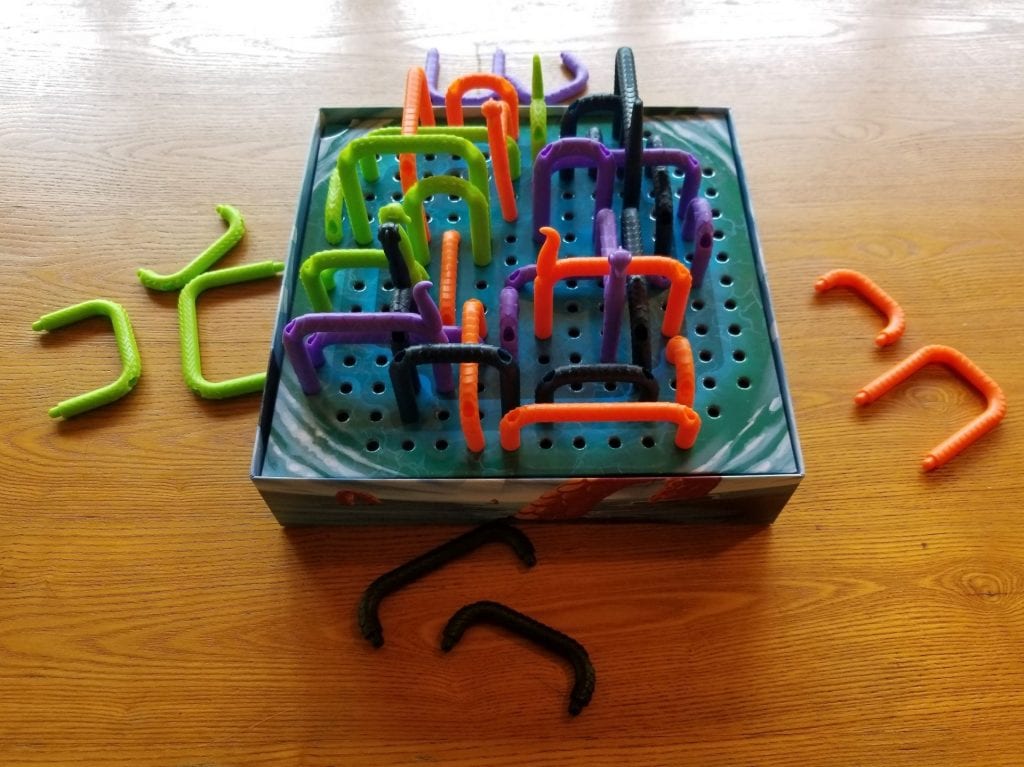
And even though the battle being fought is a very aggressive one, the game manages to never feel aggressive. The look and the feel of Block Ness exudes a sense of fun. The serpents on the box cover look like they’re enjoying their rivalry. They almost appear to be smiling. This sets a mood that is further enhanced upon opening the box and unpacking the whimsical plastic components inside. That satisfying feeling is one that stays with you from beginning to end; an end which feels like it approaches much too quickly.
In fact, that would be about my only complaint with this game. It plays rapid fire fast. This is both a strength and a weakness. It’s a strength in that the game doesn’t overstay its welcome. Most games of Block Ness only take about 15 to 20 minutes tops. But it’s a weakness in that the game is so much fun that you almost feel sad when it’s over.
The good thing about the game coming to an end so quickly? It gives me an excuse to play it again. And again. And again. And… you get the picture. And this is a game that you’ll likely wind up playing back to back sessions of. The rules are easy, the components are awesome, there’s very little downtime, and you’ll like the way that it makes your brain feel as you try to outmaneuver and block your opponents. I certainly do. That is why Block Ness has found a permanent spot on my game shelf. It’s always welcome at my table.




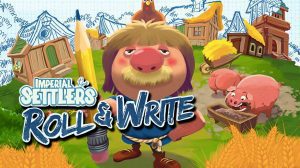







Add Comment